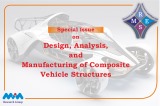Research Article
The effect of hemp fiber usage on the mechanical and physical properties of cement based mortars
Gökhan Kaplan1, Oğuzhan Yavuz Bayraktar2
1Atatürk University, Faculty of Engineering, Department of Civil Engineering, Erzurum, Turkey.
2Kastamonu University, Faculty of Engineering and Architecture, Department of Civil Engineering, Kastamonu, Turkey
Keywords
Abstract
Hemp fiber;
Mortar;
Compressive strength;
Capillarity;
Apparent porosity
In this study, the impact of hemp fibers used in different lengths and ratios on the physical and mechanical properties of mortars has been examined. In this context, the flow diameters, dry unit weight, porosity, bending and compressive strength and capillarity properties of the mortars have been determined. Hemp fiber was used in the lengths of 0.5, 1 and 2 cm and was added to the mixtures in ratios of 1, 2 and 3%. The increase in fiber length and ratio decreased the flow diameter of the mortars and increased the porosity values. In the case of using 3% fiber, the dry unit weight values of the mortars fell below 2100 kg/m3. It is understood from the flexural strength results that the curing process is very important for the improvement of the fiber-matrix interface when hemp fiber is used. As a result, as the fiber ratio increased, the flexural strength increased in both 7 and 28 days. But the increase in fiber ratio decreased the 7 and 28 days compressive strength values. According to the capillary test results, it was observed that the optimum fiber ratio was 1%. As the fiber ratio increased, the capillarity coefficients of the mixtures also increased. Compressive strengths of 50 MPa and above were obtained in mixtures having 1% fiber with a capillarity coefficient of less than 0.10 mm/min0.5. As a result, it was determined that the most suitable fiber length is 1 cm. It has been determined that 1 or 2% fiber content is more suitable in the production of mortars
© 2021 MIM Research Group. All rights reserved.

